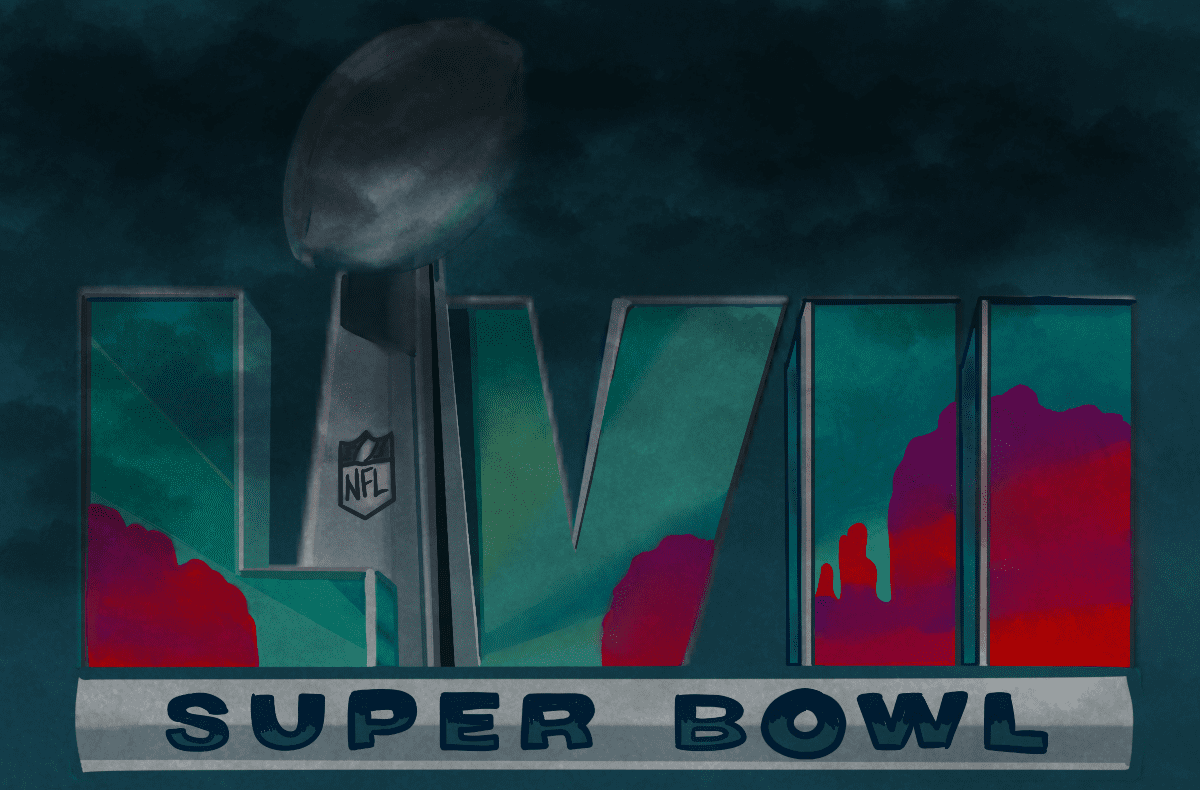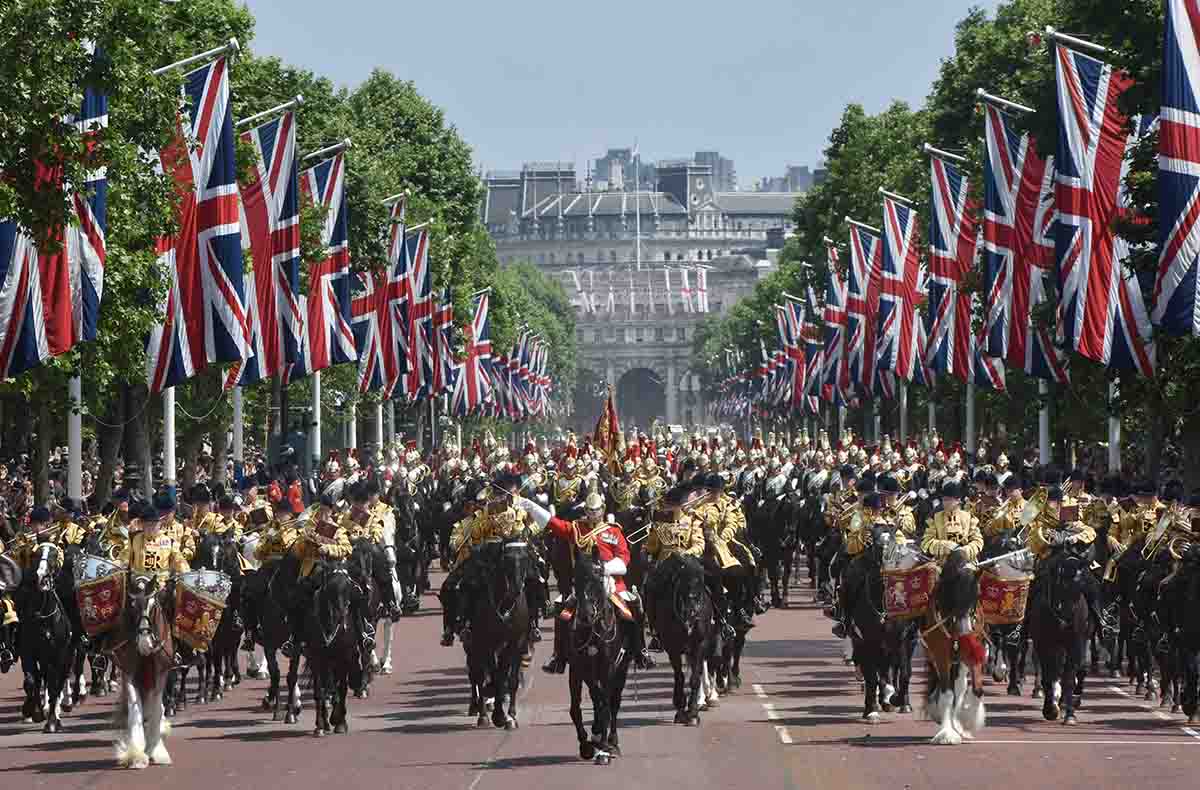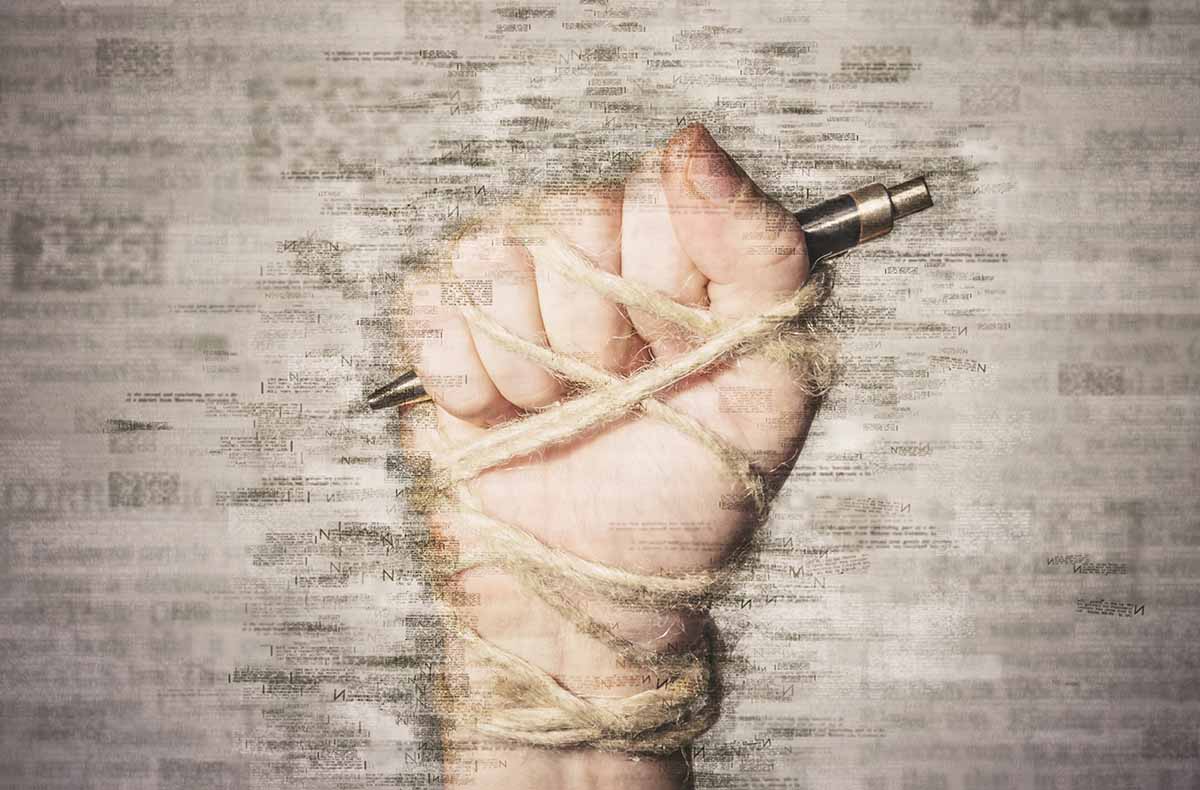
Illustration by Nikki Muller
It is hard to imagine how overblown and ostentatious a Super Bowl is until you attend one. The NFL pulls out all the stops to put on a show. The use of Roman numerals encapsulates the game’s ethos and projects an image that is vaguely pompous but definitely gladiatorial. The contest at the heart of an event like this needs to be special to match the hype.
Every indication suggests that Super Bowl LVII could be a classic. It brings together the Kansas City Chiefs and the Philadelphia Eagles, the sport’s two best teams. The playoffs have provided plenty of drama over the past weeks. The appetite for NFL football is massive and goes way beyond the United States—but this is undoubtedly America’s game.
The matchup in Glendale, Arizona, is different from the 56 previous editions in one obvious way. It is the first time each team will be led by a Black quarterback: Patrick Mahomes for the Chiefs, Jalen Hurts for the Eagles. This is especially significant since the first Super Bowl awarded to Arizona was withdrawn in 1991 because the state’s voters objected to making Martin Luther King Jr Day a paid holiday. XXVII took place in Pasadena two years later.
Mahomes and Hurts are great for the NFL’s image. Yet beneath the surface, the sport’s treatment of Black players and coaches generates some serious questions.
February 1 marked a year since Brian Flores filed a racial discrimination lawsuit against the league, the Denver Broncos, the New York Giants, and the Miami Dolphins. A judge is in the process of deciding whether the case should be heard in court or be handled by an arbitration process operated by the NFL. Flores was head coach of the Dolphins and interviewed for jobs at the Giants and Broncos. He alleges that the meetings with New York and Denver were a sham and the positions had already been given to white applicants. This is a huge problem for the NFL because it undermines the Rooney Rule, a groundbreaking policy introduced in 2003 that requires teams to interview candidates from ethnic minority backgrounds. The scheme was so successful that it was adopted by numerous non-sporting businesses and corporations across America and beyond.
Three days before the 41-year-old was due to attend an interview with the Giants, Bill Belichick texted Flores congratulating him for getting the job. The message was meant for Brian Daboll. Both men had been assistant coaches under Belichick. The Rooney Rule is one of the NFL’s proudest innovations. Suggestions that lip service is being paid to the initiative would affect the league’s image.
Mahomes and Hurts are being celebrated this week, but other Black quarterbacks have not been so lucky. Colin Kaepernick, who quarterbacked the San Francisco 49ers in Super Bowl XLVII—a 34-31 defeat by the Baltimore Ravens—alleged that he was blacklisted by the league for taking the knee during the national anthem in protest at police shootings of black men. Kaepernick and Eric Reid, a teammate, reached an out-of-court settlement with the NFL four years ago. Clearly, the Rooney Rule did not come close to eradicating racism in the sport. Such incidents appear to have been almost forgotten in the excitement of the post-season. The NFL’s publicity machine dodges awkward questions as well as Mahomes and Hurts evade sacks.
Life for quarterbacks of any color can be dangerous, and this is another area where the regulations can sometimes appear to be malleable. Part of American football’s appeal is the violence. The helmets and pads give the illusion of protection but concussion has been a massive problem for the game. Dave Duerson, a former player, shot himself in the chest at the age of 50 and left a note saying, “Please see that my brain is given to the NFL’s brain bank.” Tests showed he was suffering from chronic traumatic encephalopathy (CTE), a form of dementia caused by repeated blows to the head. Junior Seau, a hall-of-fame linebacker, committed suicide in the same manner as Duerson. Seau was 43. The condition has been found in the brains of numerous dead players after their deaths.
Ten years ago, the NFL reached a $765 million settlement with ex-players who claimed they had been misled about the severity of head injuries. This led to the introduction of new protocols. However, in September, Tua Tagovailoa, the Miami quarterback, was hit hard in a game against the Buffalo Bills and was wobbly on his feet when he continued to play. He was not placed in concussion protocol afterwards. Four days later, Tagovailoa had to be carried off the field in a cart after being hit on the head in a game against the Cincinnati Bengals. The 24-year-old was again placed in concussion protocol on Boxing Day after being hurt the previous day against the Green Bay Packers. Tagovailoa was finally passed as healthy last week. For all its glitz, bombast and hyperbole, American football has violence at its heart.
The NFL’s attempts to drive racism from the sport have only been partly successful. Mahomes and Hurts are feted for now amid the excitement that the Super Bowl brings. Even so, there are many issues that need to be addressed by the NFL. For now, no one seems to care. All eyes are focused on the big game at the State Farm Stadium in a suburb of Phoenix.
Very little negativity sticks to the Teflon sport. The spectacle overrides scrutiny when the Super Bowl comes to town. All that matters is the show. But we should take a moment aside from the excitement to consider what we’re signing off on with this kind of blind support.



